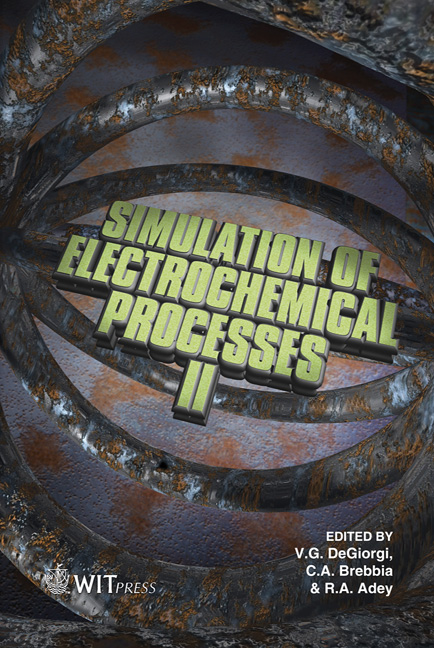Dynamic Simulation Of A Deposition Process
Price
Free (open access)
Transaction
Volume
54
Pages
10
Published
2007
Size
775 kb
Paper DOI
10.2495/ECOR070071
Copyright
WIT Press
Author(s)
J. P. Caire & A. Javidi
Abstract
A new solution for the computation of a current distribution with a moving boundary is presented. The numerical scheme is based on the capabilities of two commercial codes FEMLAB 2.3 and MATLAB 6.1. First a computation is carried out with FEMLAB which provides the electrical potential distribution at the initial time. The FEM problem and its initial solution are then saved as a MATLAB program. The MATLAB code containing the whole – draw, mesh, solve, plot – sequence is then modified to automate the iterative process. A movie is finally made from the successive solutions stored as JPEG pictures. A metal deposition process is presented as a simple test but difficult benchmark. This method is validated and can be easily extended to much more complex coupled electrochemical processes. Keywords: FEM, primary current distribution, electrodeposition, moving boundary. 1 Introduction The problems associated to evolutionary shape change are numerous and difficult to solve. They appear in various fields of electrochemical engineering such as electrodeposition [1,4,5,7,10–16], electro-machining [17], electropolishing [8], and corrosion processes [6]. Most popular commercial codes are now able to compute primary, secondary or tertiary current distributions for any geometry. If it is easy to compute the current distribution for a given geometry, it is very difficult and time consuming to deduce the time evolution of the moving interface related to the current distribution. One of the first attempts to model the moving deposit profiles is probably due to Deconinck [1] in 1985. Since then, many authors tried to compute moving profiles by use of different numerical methods such as finite difference method (FDM) [6,10,12,14], boundary element method (BEM) [1,5,9], finite element
Keywords
FEM, primary current distribution, electrodeposition, moving boundary.





